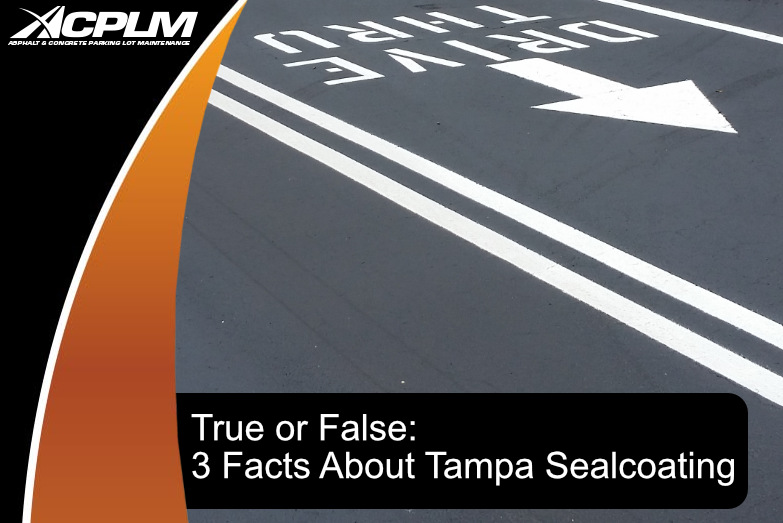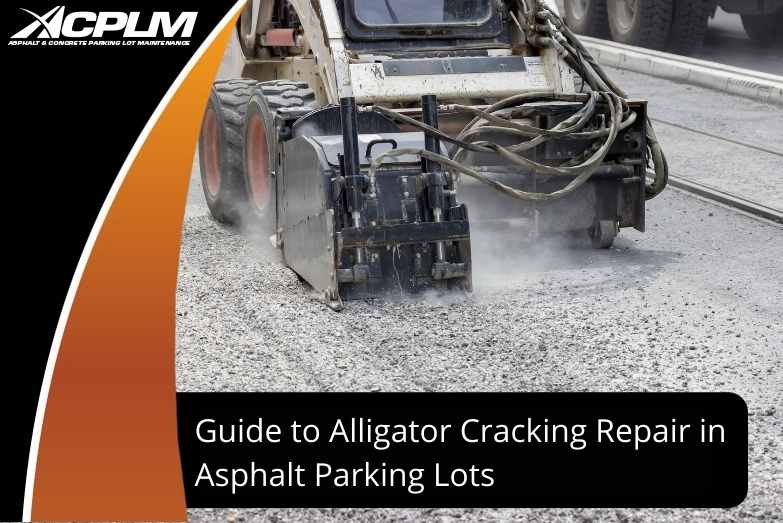
Separating Fact from Fiction When Dealing with Sealcoating.
Sealcoating is one of the most cost-effective ways to preserve asphalt pavement in Tampa’s hot, humid, and storm-prone climate. Yet despite its benefits, misconceptions about the sealcoating process persist, some of which can lead to costly mistakes.
Whether you’re a commercial property owner, facility manager, or business operator, understanding the truth about Tampa sealcoating can help you protect your investment and extend the life of your parking lot.
Let’s break down the facts and fiction behind sealcoating and set the record straight.
Key Insights
-
Sealcoating should not be applied immediately after a new asphalt installation—doing so can damage the pavement.
-
While sealcoating protects the surface of your asphalt, it does not reinforce the structural layers underneath.
-
A properly applied sealcoat improves aesthetics and acts as a preventative maintenance treatment, not just a cosmetic upgrade.
-
Over-sealcoating can cause cracking, peeling, and even total pavement failure—less is more when it comes to application layers.
-
The best sealcoating results come from hiring professionals who understand the correct timing, materials, and techniques.
What Is Sealcoating?
Sealcoating is the process of applying a protective layer (sealant) to the top surface of asphalt pavement. This layer shields your asphalt from harmful elements such as:
-
Rain and moisture
-
Oxidation and air exposure
Over time, exposure to the elements dries out the asphalt’s binder, making the surface brittle and more susceptible to cracking, potholes, and erosion. Sealcoating restores a fresh, black appearance and extends the usable life of your pavement by several years.
Myth vs. Reality: Tampa Sealcoating Facts
Fact or Fiction: “A new asphalt surface should be sealcoated immediately to protect it.”
Answer: Fiction.
While the intention is good, sealcoating too early after new asphalt installation can do more harm than good. Asphalt needs time to cure, usually between 6 months to 1 year depending on weather and usage, before a sealcoat can be safely applied.
Curing allows the oils in the asphalt to settle and evaporate naturally. Applying sealcoat too early can trap those oils, resulting in a surface that never fully hardens. The result? Premature cracking, peeling, and wasted money.
The Right Approach: Wait until the new asphalt has properly cured and the surface begins to show signs of minor wear or fading. Then, apply the first sealcoat for maximum protection and longevity.
Fact or Fiction: “Sealcoating helps protect the structure below the surface.”
Answer: Fiction.
Sealcoating is a surface treatment, not a structural repair method. It does not reinforce the subgrade or base layer beneath the asphalt. While it prevents water, oil, and UV rays from reaching the deeper layers, it does not address structural deficiencies like shifting foundations or subsurface erosion.
If your parking lot has deep cracks, potholes, or soft spots, those must be addressed with patching, resurfacing, or reconstruction, not sealcoating.
Fact or Fiction: “Sealcoating is more than a paint job, it helps preserve the asphalt surface.”
Answer: Fact.
This is one of the most misunderstood aspects of sealcoating. It’s often mistaken as a cosmetic-only procedure because it leaves a fresh black finish. But the benefits go far beyond looks.
Sealcoating:
-
Seals hairline cracks before they grow
-
Slows oxidation
-
Makes cleaning easier (debris and oil don’t stick as easily)
-
Improves resistance to gas and oil spills
-
Reduces long-term maintenance costs
When sealcoating is part of a regular pavement maintenance plan (every 3–5 years), it can extend the life of your parking lot by up to 50% or more.
Fact or Fiction: “You can’t overdo it with sealcoating, the more, the better.”
Answer: Fiction.
Over-sealcoating is one of the most common and costliest mistakes property owners make. Applying too many layers creates a brittle, thick film that cracks, peels, and delaminates. This leads to costly repairs, and sometimes the need for full removal and replacement.
Signs of over-sealcoating include:
-
A shiny, slippery surface
-
Thick buildup with no visible aggregate (rock) on the surface
-
Cracking and peeling in chunks rather than along natural stress lines
The ideal sealcoat should allow the texture of the asphalt aggregate to remain visible. This ensures good traction, durability, and proper adherence of the sealant.
Tip: A good rule of thumb is to apply no more than one coat every 3–5 years, depending on traffic volume.
Why Tampa Properties Need Sealcoating
Tampa Bay’s climate is particularly harsh on asphalt. The combination of:
-
High UV exposure
-
Heavy rains and humidity
-
Salt exposure near coastal areas
-
Frequent vehicle traffic
…accelerates the breakdown of asphalt surfaces. Regular sealcoating protects your parking lot from these conditions and minimizes the need for expensive repairs down the road.
For commercial property owners, it also plays a role in tenant satisfaction, liability prevention, and curb appeal.
Tips for Getting the Best Sealcoating Results
To make the most of your investment, follow these expert tips:
-
Time it right: Wait 6–12 months after new asphalt installation before the first sealcoat.
-
Hire experienced contractors: Proper prep and application techniques matter—look for companies with a strong track record in Tampa.
-
Don’t overdo it: Avoid applying sealcoat more frequently than needed. Trust your contractor’s guidance based on your lot’s condition and usage.
-
Schedule maintenance: Have your lot evaluated every couple of years to determine the best time for reapplication.
-
Watch the weather: Sealcoating must be done in dry weather above 50°F and with no rain for 24 hours afterward.
FAQs About Tampa Sealcoating
How often should sealcoating be done in Tampa?
In Florida’s hot and humid climate, sealcoating is typically needed every 3 to 5 years, depending on traffic levels, sun exposure, and the condition of your lot.
Can I sealcoat asphalt that already has cracks?
Minor cracks can be sealed before applying the sealcoat, but larger or structural cracks need to be repaired with crack filling or patching first. Sealcoating alone will not fix cracks.
How long after sealcoating can I use my parking lot?
Most sealcoat applications require 24 to 48 hours to fully cure. During this time, vehicles and foot traffic should be kept off the surface.
Is sealcoating necessary if my lot looks okay?
Yes. Sealcoating is a preventative measure. Even if your lot looks fine now, UV rays and rain are weakening the asphalt over time. Sealcoating helps you avoid expensive repairs later.
What’s the biggest mistake people make with sealcoating?
Over-sealcoating. Applying too many layers too frequently can cause surface failure. Always work with professionals who assess the condition first and apply only what’s needed.
Protect Your Investment with Expert Tampa Sealcoating Services
When done right, sealcoating is one of the smartest and most affordable ways to protect your commercial property’s pavement. But like any maintenance procedure, results depend on proper timing, technique, and experience.
At ACPLM, we specialize in professional sealcoating in Tampa and surrounding areas. With over 50 years of experience in pavement maintenance and asphalt services, our team knows how to protect and prolong the life of your asphalt parking lot.
Let us evaluate your property and create a customized maintenance plan to help you save money while improving curb appeal and safety.
Call us today at 888-959-9637 to schedule a free sealcoating consultation.






